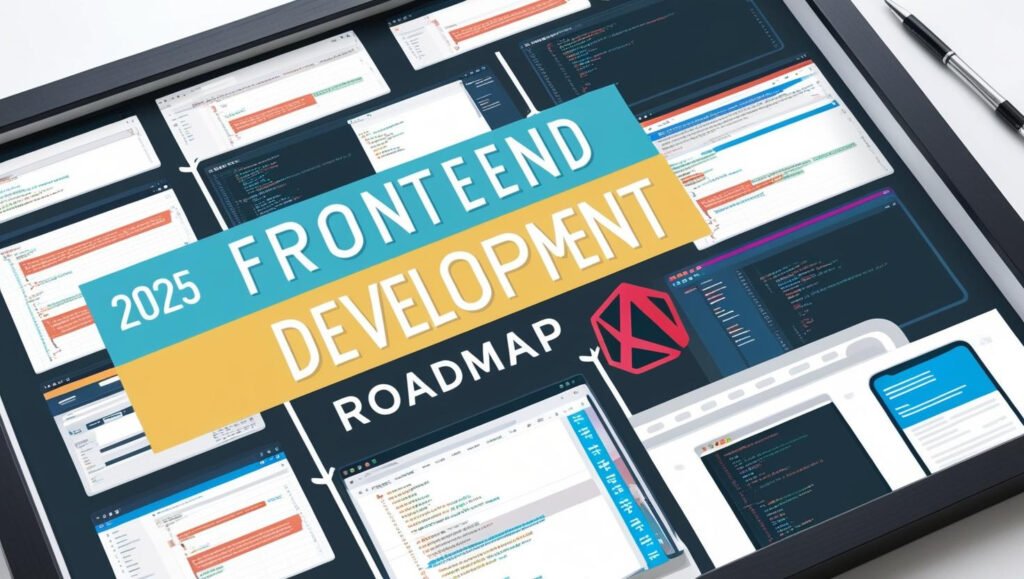As we approach 2025, the frontend development landscape continues to evolve. Modern developers must have essential skills that not only improve their proficiency but also meet industry demands. This road map outlines current trends and critical skills required for success in this dynamic field.
In 2025, modern frontend developers are expected to master a variety of technologies and frameworks. Proficiency in HTML, CSS, and JavaScript remains foundational. Furthermore, familiarity with frameworks such as React, Vue, and Angular will be paramount. Understanding responsive design principles and accessibility will also elevate a developer’s contributions, fostering an inclusive experience for diverse users.
1. Understanding Frontend Development
Frontend development is the practice of creating the visual components of a website or application that users may interact with directly. This component mostly uses HTML, CSS, and JavaScript to create an interesting user experience. Frontend developers focus on sensibility, such as layout, design, and responsiveness, to ensure that the finished result is not only functional but also visually beautiful.
Key Responsibilities of a Frontend Developer:
- Creating responsive and interactive user interfaces.
- Ensuring compatibility across various devices and browsers.
- Implementing design mockups and prototypes.
- Collaborating with backend developers and designers.
- Optimizing application performance and loading times.
2. Core Languages of Frontend Development
At the heart of frontend development are three core languages: HTML, CSS, and JavaScript. Mastery of these languages is fundamental for any developer on the frontend developer roadmap.
HTML (HyperText Markup Language)
HTML is the foundation of website content. It defines the structure of webpages. Key areas to focus on are:
- Understanding HTML5 semantics.
- Accessibility approaches (for example, employing ARIA roles).
- Using semantic HTML improves SEO and readability.
CSS (Cascading Style Sheets)
CSS is essential for presentation and visual styling. Developers should learn:
- CSS3 features and properties (flexbox, grid).
- Responsive design principles (media queries).
- CSS capabilities can be enhanced by using preprocessors such as SASS or LESS.
- The BEM methodology (Block, Element, Modifier) is a popular approach to organizing and structuring CSS in web development. It enhances readability, reusability, and maintainability of code by following a clear naming convention and modular architecture. Here’s an overview of how BEM is used in CSS development:
JavaScript
JavaScript makes the web more interactive. As you advance:
- Understand ES6+ features (let, const, arrow functions).
- Learn how to manipulate the Document Object Model (DOM).
- Learn the fundamentals of JavaScript, including async/await, promises, and closures.
3. Version Control Systems
For cooperative projects, version control is crucial.The most popular version control system is called Git. Gaining proficiency with Git will allow you to:
- Track changes in your projects.
- Use repositories like GitHub and GitLab to collaborate with other developers.
- Manage branches and merge conflicts effectively.

4. Frameworks and Libraries
Frontend frameworks and libraries significantly enhance development efficiency and capabilities. As of 2025, here are the top choices to consider:
React
Maintained by Facebook, React is a powerful library for building user interfaces. Key concepts include:
- JSX syntax.
- Component-based architecture.
- State and props management.
- Using hooks for functional components.
Vue.js
Vue.js is known for its gentle learning curve and flexibility. Key features to focus on:
- Vue instance properties and lifecycle methods.
- Vue Router for SPA navigation.
- Vuex for state management.
Angular
Google maintains Angular, a powerful framework for creating massive applications. Some crucial areas to investigate are:
- The main language used by Angular is TypeScript.
- Component development and reactive programming.
- Dependency injection and routing.
Svelte
A new frontend development paradigm is represented by Svelte. For improved runtime performance, it compiles components during the construction process. Crucial elements consist of:
- Reactive programming model.
- Svelte stores for state management.
- Built-in animations and transitions.
5. Responsive Web Design
Given the wide variety of devices that people use to access the internet, responsive design is essential. Important abilities include:
- Media Queries: Learn how to apply different styles based on device characteristics.
- Fluid Grids and Layouts: Use relative units (percentages, ems) to create flexible designs.
6. Performance Optimization
Performance is a critical factor in user experience. As a frontend developer, you need to focus on optimizing applications through:
- utilizing CDNs and minimizing HTTP requests.
- Image optimization techniques.
- Implementing lazy loading for images and other resources.
- using caching techniques to increase load speeds.
7. Testing and Debugging
To ensure the quality and functionality of your applications, testing is crucial. Become acquainted with:
- Unit Testing: Testing individual pieces of code for correctness (e.g., Jest, Mocha).
- End-to-End Testing: Simulating user interactions in a live environment (e.g., Cypress, Selenium).
- Debugging Tools: Use browser developer tools for debugging and profiling.
8. Tools and Development Workflow
Modern frontend development relies heavily on tools that streamline the development process. Key tools include:
- Package Managers: Use npm or Yarn for managing project dependencies.
- Build Tools: Learn about Webpack, Parcel, or Vite for module bundling and asset management.
- Code Editors: Familiarize yourself with editors like Visual Studio Code and their extensions.
9. APIs and Fetching Data
APIs are essential in modern web applications, allowing frontend developers to connect to external services. Understanding how to handle APIs is crucial:
- RESTful Services: Learn how to interact with REST APIs using fetch or axios.
- GraphQL: Explore this alternative API model for more efficient data queries.
10. User Experience (UX) and User Interface (UI) Design Principles
Understanding UX and UI principles will enhance your ability to create appealing, user-friendly applications. Key topics include:
- Color Theory: Utilize color effectively to convey messages.
- Typography: Understand font selection, readability, and hierarchy.
- Design Systems: Familiarize yourself with established principles to create consistent UI across applications.
11. Staying Updated
The field of frontend development is marked by continuous advancements, making lifelong learning essential. Developers should actively seek out resources like online courses, webinars, and industry conferences to stay abreast of emerging technologies. Engaging with the developer community through forums and social media can also provide invaluable support and insights.
The technological landscape is always changing. Here’s how to stay up to date:
- Follow Industry Trends: Participate in online communities such as Stack Overflow, Reddit, or Twitter to remain informed about the most recent discussions.
- Engage in meetings and conferences to share thoughts and perspectives with other developers.
- Engage in Online Tutorials and Courses: Sites such as Codestart, Udemy, or freeCodeCamp offer top-notch learning tools.
12. Building a Portfolio
A solid portfolio highlights your abilities and background. Concentrate on creating projects that showcase your expertise using the frontend developer roadmap as a guide:
- Personal Projects: Develop applications based on your interests.
- Open Source Contributions: Participate in ongoing projects to obtain practical experience.
- Documentation: Keep track of your work to show off your analytical abilities and problem-solving techniques.
13. Career Path and Opportunities
In 2025, the opportunities for frontend developers will continue to grow. Potential career paths include:
- Frontend Developer: Focus solely on building user interfaces.
- Full-Stack Developer: Gain skills in both frontend and backend development.
- UI/UX Designer: Transition into design roles if you have a passion for user experience.
Conclusion
The 2025 roadmap for frontend developers lists all the skills required to succeed in this rapidly evolving field. You may set yourself up for success in frontend development by learning the fundamentals of HTML, CSS, and JavaScript, investigating well-liked frameworks, comprehending design concepts, and keeping up with the most recent advancements.
The needs of frontend developers will change in tandem with the ongoing advancement of technology. Following this road map will provide you the information and abilities you need to adjust and succeed in an ever-changing industry. Develop a solid portfolio, participate in the community, and embrace lifelong learning. For individuals who are ready to develop and invent, the future holds great promise.
This article serves as a guide to help you navigate your journey as a frontend developer in 2025 and beyond. Embrace the challenges and opportunities that lie ahead, and remember that your road is yours to create.


